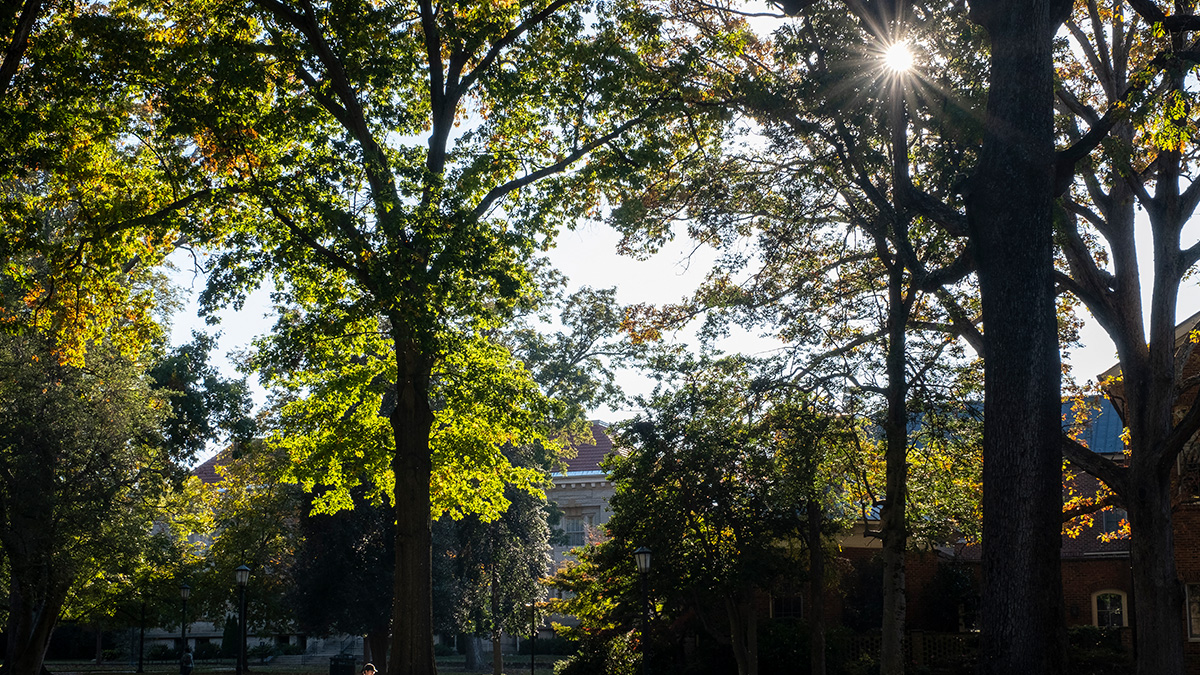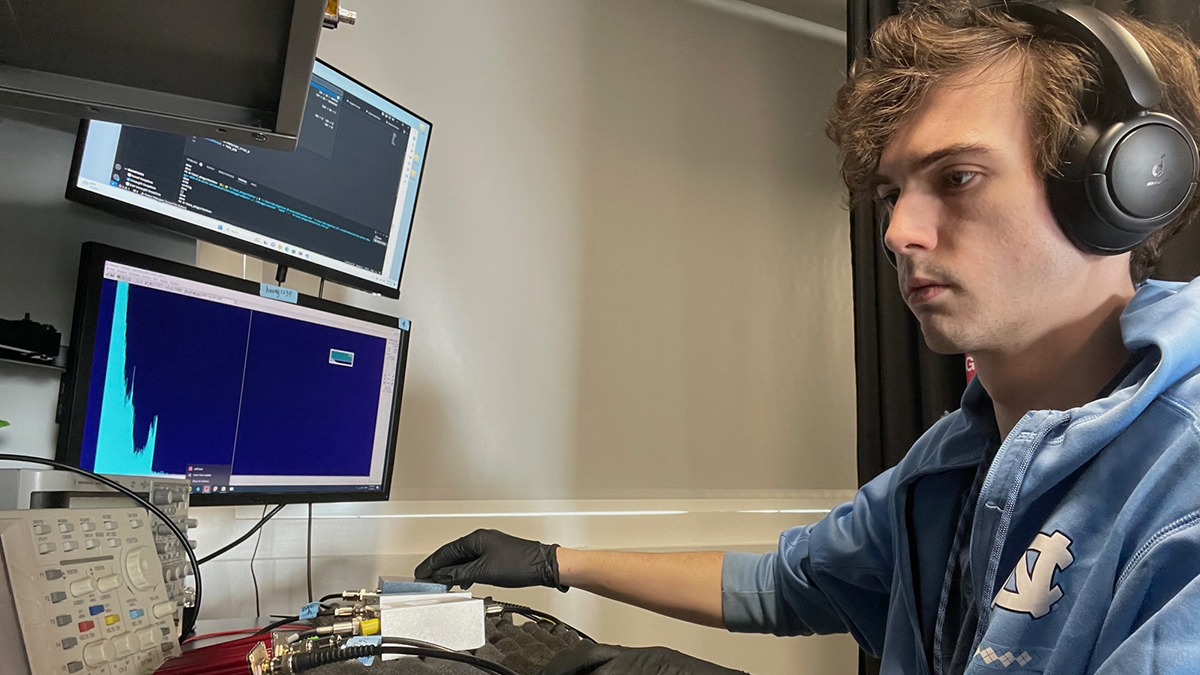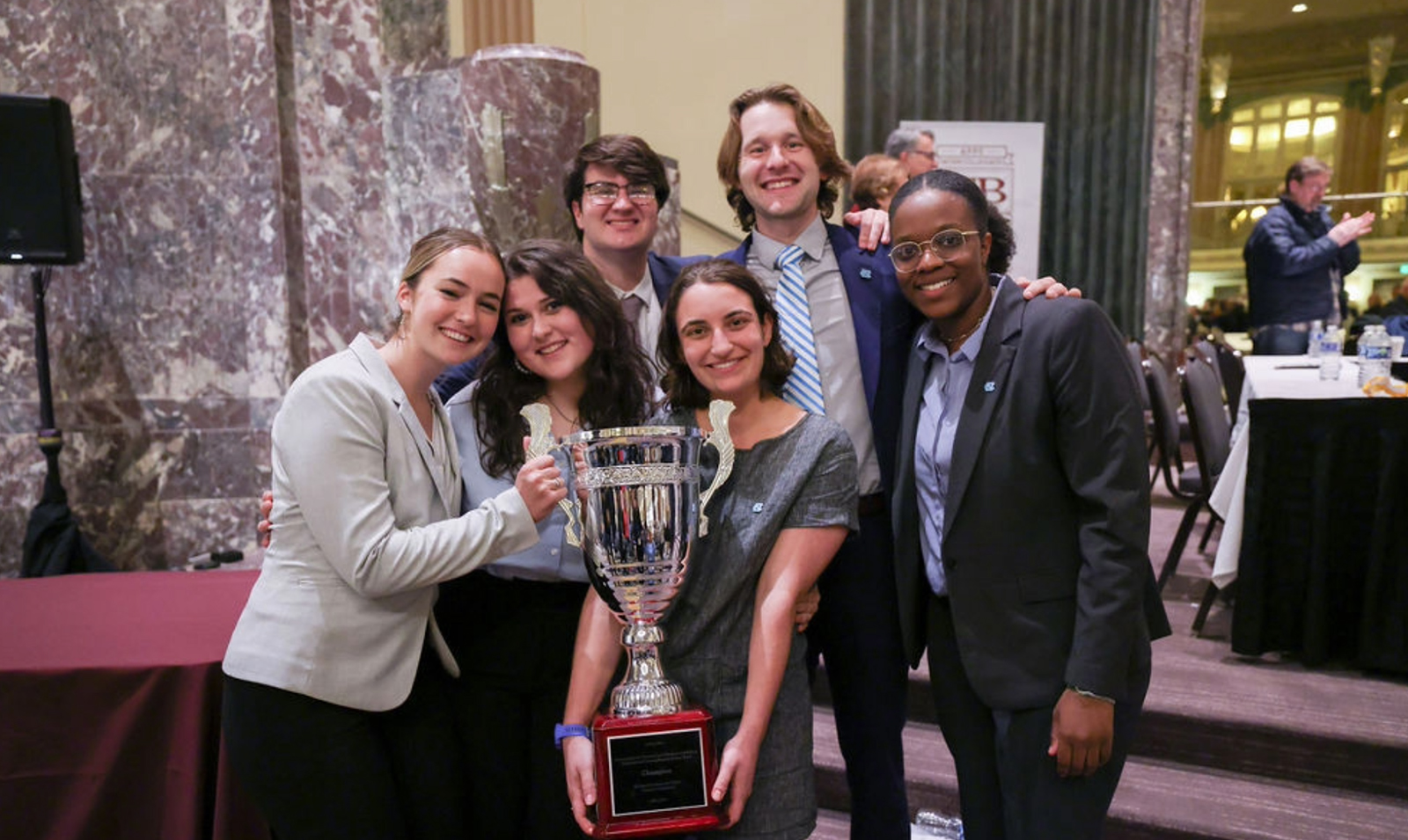Collaborating for a cure
Drug treatments for a rare form of cancer have eluded researchers for years. David Drewry’s work at the UNC Eshelman School of Pharmacy has scientists and survivors optimistic that big breakthroughs are within reach.

At the age of 12, just months before he succumbed to a rare form of cancer called chordoma, Justin Straus gave a speech to the International Chordoma Research Workshop. Sitting at a table and wearing a white T-shirt, his hair short from recent chemotherapy, Justin made a plea to chordoma researchers: Work together.
“We can come farther if we all collaborate,” Straus said at that meeting in 2008. “I think that if doctors would start sharing their advances with one another, then progress would come faster.”
When Justin was diagnosed with chordoma in 2002 at seven years old, treatments were limited, and they still are today. Most patients undergo surgery and radiation, but chordoma tumors usually form near the brainstem and spinal cord, leaving surgeons little margin to remove surrounding tissue to reduce the chance of recurrence. Chordomas that recur are rarely curable, and there are no drug treatments if further surgery and radiation are not viable or effective.
For years, scientists have sought to develop drugs for chordoma, and recent research at the UNC Eshelman School of Pharmacy presents hope that important breakthroughs are close. As researchers pursue a promising new drug target, it turns out that Justin’s call for collaboration represented much more than a flash of youthful idealism. It serves, in fact, as a playbook for scientists who are making progress on chordoma treatment.
‘Extraordinarily promising research’
The observant gaze of his wife of 40 years led to an early chordoma diagnosis for John Watson ’77. Watson was brushing his teeth in the morning when his wife, Betsy Blackwell ’77, told him that his left eye was not tracking properly with his right eye and that he should see an ophthalmologist.
“She hadn’t quit looking at me,” Watson quipped.
A visit with the ophthalmologist led to more doctors’ appointments for a final diagnosis. Finally, an MRI showed a tumor at the base of Watson’s brain that doctors identified as chordoma. “It came as quite a shock because I’d had no headaches, no fatigue, no symptom of any kind that was perceptible to me,” Watson said.
Consulting with experts, Watson and Blackwell, who live in Chapel Hill, quickly decided that Watson would undergo surgery in November of 2020 at UNC Hospitals to remove the tumor.
Following the successful surgery, doctors recommended proton beam radiation therapy to reduce chances of recurrence. There are no centers offering that treatment in North Carolina, so Watson and Blackwell moved temporarily to Washington, D.C., for the five-day-a-week sessions at a hospital there.
Watson emerged cancer-free, but he was struck by the difficulty of the entire treatment regimen, from the grueling surgery and recovery to the demands of undergoing radiation therapy so far from home. He and Blackwell met with Josh Sommer, executive director of the Chordoma Foundation and also a chordoma survivor, for guidance on how they could support research into new drug therapies that would offer more options for chordoma patients.
“We got to the other side of surgery and radiation treatment and said, ‘We would really like to do something to push research in a direction that would be less intrusive,” Watson shared. “Josh said, ‘Funny you should say that because there is extraordinarily promising research going on at UNC.’ We are both graduates and committed to the University, and to learn about what’s happening right here was just astonishing.”
From personal to professional
Years before Justin Straus delivered his Chordoma Research Workshop speech in 2008, Dr. David Drewry knew of Justin’s story and his battle against chordoma. Drewry was a chemist and researcher at the pharmaceutical company GlaxoSmithKline in North Carolina before he joined the UNC Eshelman School of Pharmacy as an associate professor in 2017. His daughter was a classmate of Justin’s at Durham Academy, a private school in Durham, North Carolina, and Drewry recalled trying to help his child understand what her friend was going through.
“Justin’s family was very open about it, and it was part of the kids’ experience,” Drewry said. “Sometimes Justin was in class, and sometimes he wasn’t based on his treatments. He would talk about it with his friends, and we would talk about it with our daughter to help her with this difficult and hard-to-understand thing.”
Supporting Justin through the rigors of his illness became a cause for the close-knit Durham Academy community, and after Justin passed away in 2008, his classmates held fundraisers to support chordoma research. Drewry keeps a collection of T-shirts from these events, including one with the word perseverance written across the front — the word Justin managed to write across a whiteboard as a final message to his family and loved ones shortly before he died.
At one fundraiser, Drewry met Sommer, of the Chordoma Foundation. At the time, Drewry was at GSK researching compounds used to treat other types of cancer. His conversations with Sommer and his daughter’s experience led Drewry to think about what he could do as a researcher.
“It was so important to my daughter,” Drewry said. “For me, buying a T-shirt was an easy thing I could do. It seemed more tangible to me as a scientist to put my training and expertise in play to make a long-term contribution.”
Drewry shared Justin’s point of view that researchers should work more collaboratively. At GSK, Drewry had helped start an open science project that facilitated easier and more routine sharing of compounds that GSK had developed with academic institutions and labs around the world.
“We realized that it would be much more powerful for the scientific community and patients if we could send our work to someone studying malaria or a cancer like chordoma that wasn’t our focus.” Drewry said. “We managed to implement that at GSK, and we started sharing widely. I wanted chordoma research to become part of that.”
Sommer introduced Drewry to a pathologist who was studying chordoma at University College London. Drewry sent her compounds developed at GSK that she was then able to test in chordoma cell lines supplied by the Chordoma Foundation. Her work showed promising results and was eventually published.
“That was the first moment when I felt like I could really contribute,” Drewry said. “I’ve held onto what Justin said about persevering and collaborating because discovering new drugs is an extremely hard job. It’s such a complicated path from an idea to a medicine that you need lots of people working together on it. Justin told us that we would go farther if we collaborated, and that is absolutely true.”
Binding breakthroughs
Drewry’s collaborator at University College London, Dr. Adrienne Flanagan, had discovered a critical link between chordoma and a protein called brachyury. Active in the body during embryonic development, brachyury then shuts off in most people. Flanagan’s work showed that brachyury remained active in chordoma patients, a lightbulb moment that Flanagan described as a “chink in the armor” of chordoma.
Further research revealed that almost all chordoma patients have an inherited alteration in at least one copy of the brachyury gene, further solidifying evidence that this protein presented a promising target for drug development.
At the UNC Eshelman School of Pharmacy, Drewry began developing molecules that he hoped could bind to the brachyury protein and block its function. He enlisted the help of scientists at Oxford University with expertise in x-ray crystallography, which allowed Drewry to see if any of the compounds bound to the brachyury target. Of 1,000 compounds x-rayed, almost 50 successfully associated with brachyury.
“And as a medicinal chemist, that’s a eureka moment for me, because now I can take those compounds and make them better,” Drewry said.
The research team has now identified several compounds that bind to brachyury and appear to disrupt its functioning, and Drewry is working to show cause and effect. “That’s the next big thing we need to work on is understanding that the effect we see in a chordoma cell is due to this molecule binding to brachyury,” Drewry said. “That’s the next scientific challenge that’s going to push the field along.”
There is also a possibility that Drewry’s work will have application beyond chordoma treatments. Data collected through the years from cancer patients have shown that many aggressive cancer cases are linked to the presence of the brachyury protein. Compounds that Drewry develops could be used as tools to explore brachyury’s role in a variety of cancer types, and also as templates for drugs that could one day represent effective treatments.
Targeting the brachyury protein is a new strategy for researchers developing cancer drugs, making private philanthropy a critical source of funding for Drewry’s work. John Watson and Betsy Blackwell have pledged to match donations up to $50,000 to support Drewry’s lab. The funding will help Drewry continue his research until further grants from the federal government and other funders are secured.
“They are trying to unlock mysteries that are unknown to us,” Watson said. “They are on a very important knowledge development journey. They haven’t gotten there yet, and we’d like to help.”
The Chordoma Foundation has awarded more than $1.5 million in grants to Drewry’s research, and Sommer uses a single word to describe the feeling Drewry’s work gives him: hope.
“It is truly justified hope that we can solve this problem now,” Josh said. “It’s knowing that we are on the cusp of important discoveries. That’s why it’s important to support David’s work.”




